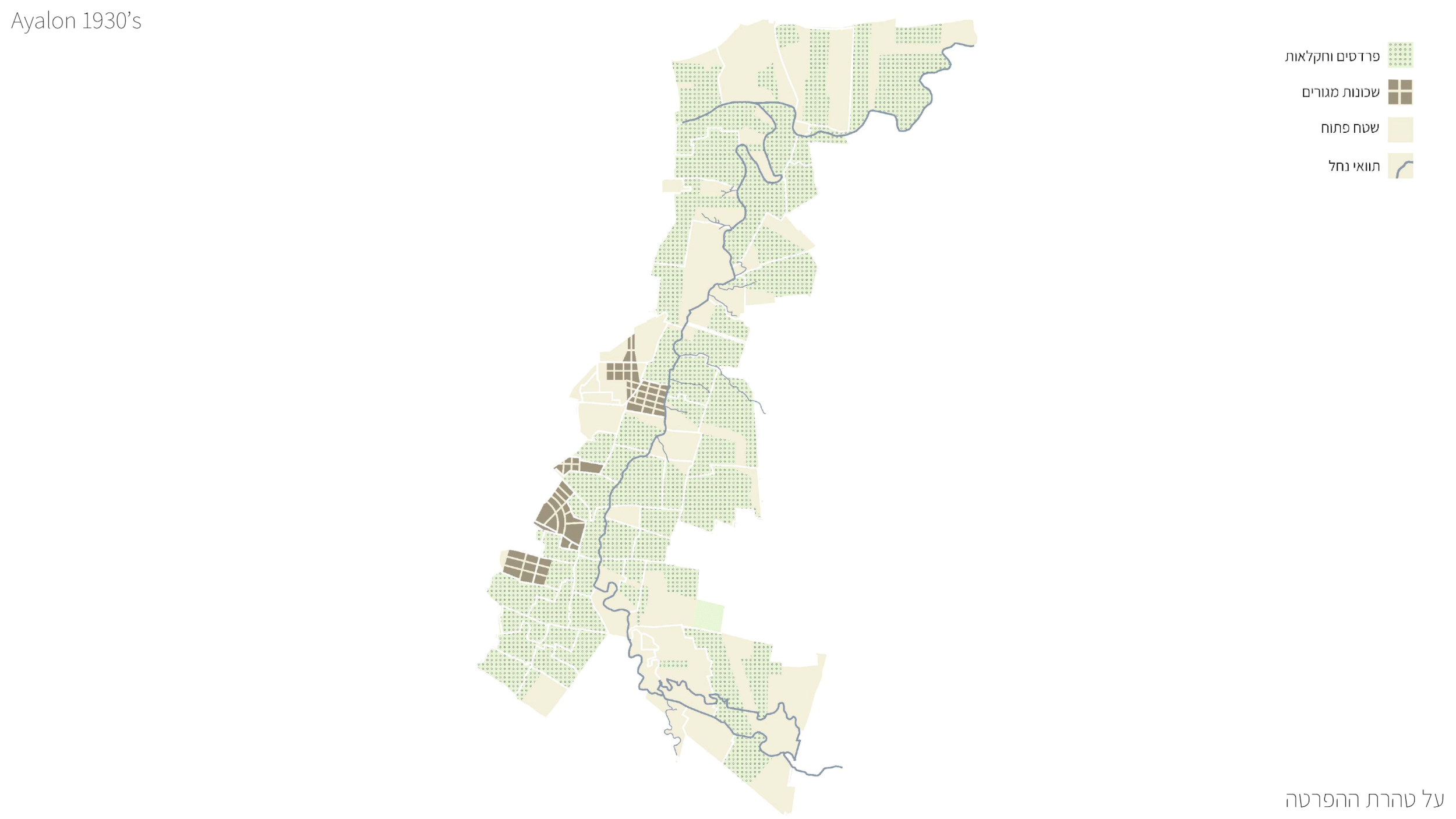LANDSCAPE REFORMD
“The shining water that moves in the streams and rivers is not just water, but the blood of our ancestors. If we sell you our land, you must remember that it is sacred. Each glossy reflection in the clear waters of the lakes tells of events and memories in the life of my people. The water’s murmur is the voice of my father’s father.
The rivers are our brothers. They quench our thirst. They carry our canoes and feed our children. So you must give the rivers the kindness that you would give any brother.”
- Chief Seattle, 1855. (In a letter to U.S President Franklin Pierce in response to the purchase of native’s land)
This project was an attempt to create a new environment based on the idea of understanding a landscape as architecture.
Revisiting the Ayalon Riverbed
In the 1970s, coinciding with the Americanisation of the territory, Israeli authorities launched an infrastructural project at an unprecedented scale – retrofitting a highway into the polluted riverbed of the Ayalon, a territory of no ownership and an inviting topography to fill. From its early construction in the 1980s and still today, the Ayalon Highway is under constant construction. It is part of an endless effort to add vehicular lanes and railways in a futile attempt to accommodate the needs of a growing population, heavily dependent on private transport.
Ayalon River
The Ayalon Highway, located in the heart of the Tel Aviv-Jaffa metropolitan area, is the main transportation artery of the Israeli state. When examining the history of the landscape in the middle of the 20th century, maps and aerial photographs reveal that it was composed of a wide stretch of agricultural territory – groves and orchards stretching between the port city of Jaffa and the Ayalon River. The yield was abundant and villages were prosperous: the land enjoyed a well-watered agricultural ecosystem and fruitful soils, courtesy of the river. Furthermore the Ayalon’s yearly floodings were a precious resource that supplied fertile land and contributed to maintaining the aquifer at a high water level, thus contributing to the productive ecosystems of Jaffa and its surroundings.
The Great Twirl
With the accelerated urbanisation of Tel Aviv, the Ayalon River turned from a resource into a problem. Straightning its loops for train tracks, narrowing its path for more driving lanes, and suffocating it with concrete walls, the river was being tamed. Ironically, yearly floods, which for centuries had distributed fertile eroded soils to the fields and orchards, now resulted in extensive annual damage to infrastructure and property. Thus, many of these areas of intervention (much like “The Great Twirl” seen below), end up as parkinglots or other semi-public spaces, unfit for major construction.
Landscape as Architecture.
The idea was simple: to superimpose the environment based on historical fact. Targeting the areas of such intervention and rebuild the natural habitat of the past in the form of floodplains - thus gaining more meaningful public spaces as well as grounds that are naturally able to soak the annual flood water.
It is essential to create a new natural environment only by re-constructing natural elements that used to exist at the place, including its geological make up, trees, mosses, grasses, stones, water, and soil. Maximizing the environmental potential of this land, we can create a new landscape. This not only ensures the absorbance of the soil, but also its seasonal bloom in the summertime.
